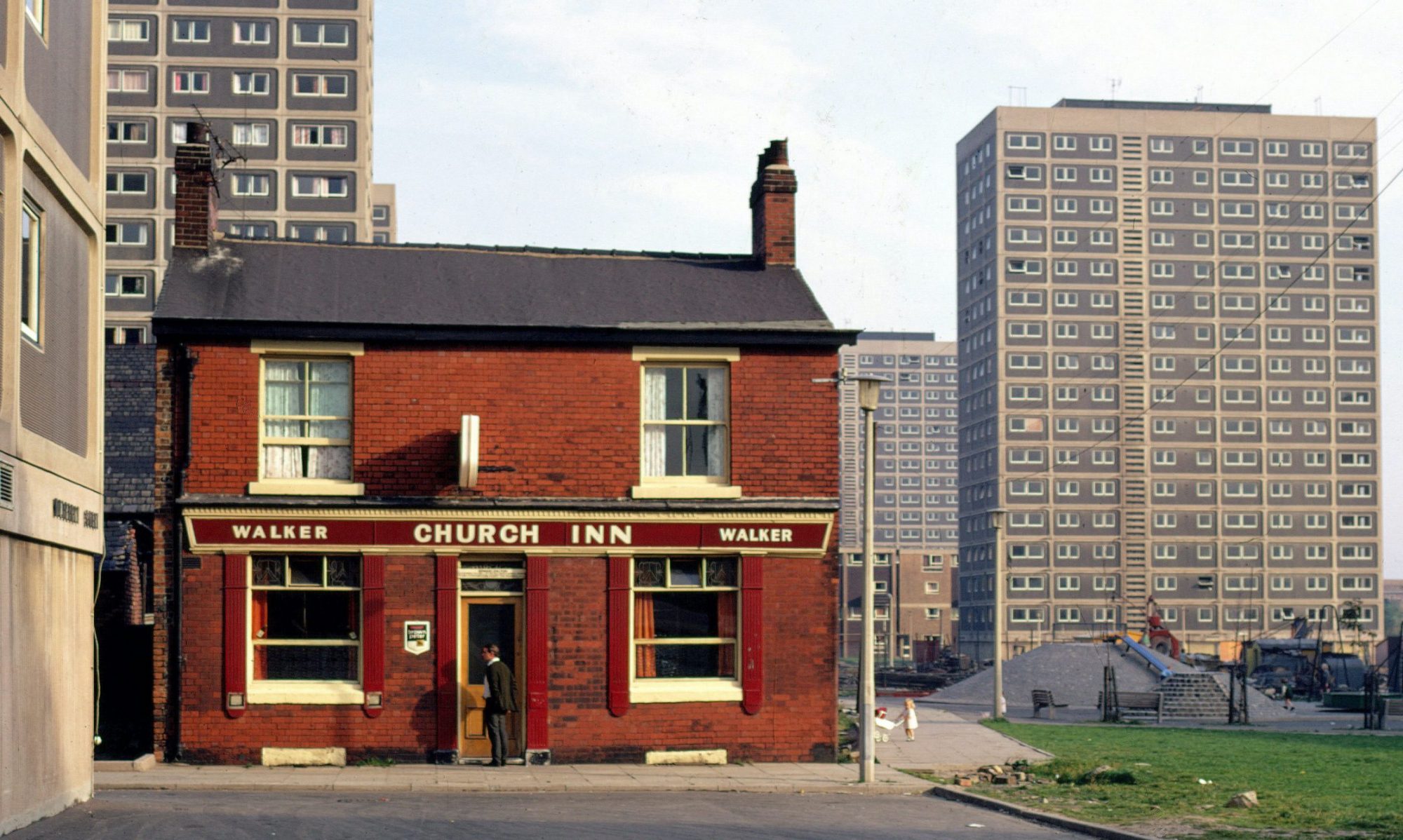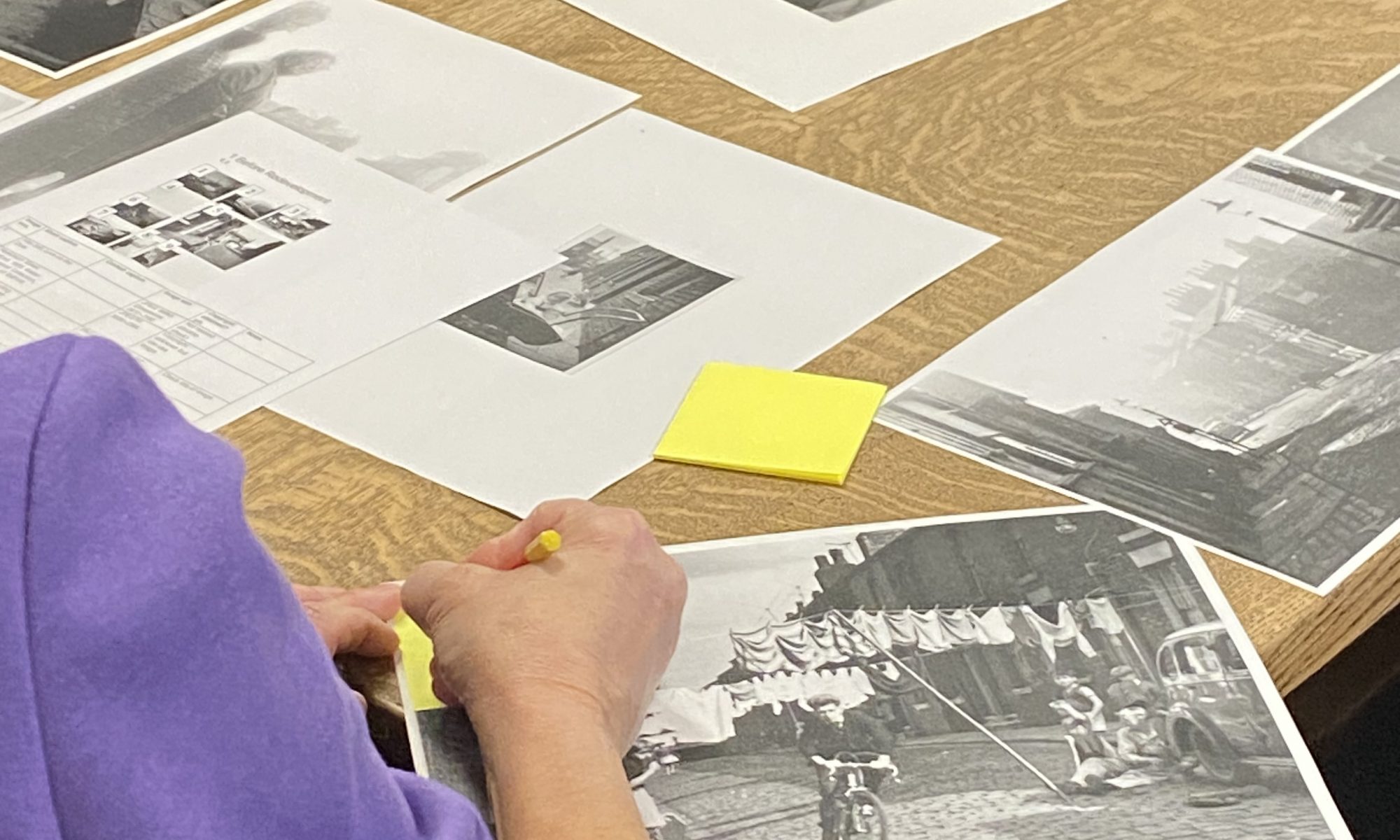A much belated Happy New Year to our readers. As we enter the final stage of the Modern Backdrop, work is underway to design and curate our end of project exhibition which will open at the Salford Museum and Art Gallery in late Spring 2024. Earlier this month we invited members of the community to a co-curation session at Salford Local History Library to help us identify, explain and contextualize the images that will be on display.
Over the course of the project, we have gathered hundreds of images including small family snapshots taken outside and inside homes, film and TV stills, professionally taken photographs and architectural drawings and illustrations. With such a large amount of material the challenge has been to select images that make us think about how the architecture of housing in Salford has changed or even remained the same, not just in terms of its design but also in terms of memory, experience, and representation.
Over the last month Tanja has been busy drawing up a short list (which is in reality very long!) of images, and playing around with how these could be organized and displayed in a gallery setting. Many of the images she selected are ones that were shared with us by members of the community, either photographs or slides taken by them or family members.
During the co-curation session we shared printouts of the images and a plan of how they would be grouped into several themes. We asked participants to look at the printouts and to help us fill in the gaps and provide context by identifying the names of streets, buildings and viewpoints that have not been recorded or documented alongside the images. Some of the places were quicker and easier to identify than others, but the exercise highlighted just how valuable local ‘on the ground’ knowledge is!
We also asked participants what they thought of our selection of images and invited them to suggest captions. One of the captions that sticks in my mind was suggested for an image featuring a group of elderly residents sitting outside Salford Precinct on what looked like a dry, sunny day. Behind them, just visible is a distinct ‘Marks and Spencer’ shop sign. The caption penciled on the reverse of the printout read: “When Salford was posh enough for Marks'”.
Looking through the images also prompted discussion between the participants and a sharing of memories and experiences. In fact the event brought together people who are lived in adjacent streets, been to the same school or had mutual friends but hadn’t encountered each other for years. It demonstrated to me the power of a shared sense of place, and its history.
Thanks to everyone who attended the session and thanks also to Duncan at the Salford Local History Library for hosting us!



Thank you Alex and Tanja for presenting this view of Salford, which is so important in remembering the ‘invisible city’. Salford means so much to so many people. It is wonderful that your research has produced this exhibition. It has invoked so many memories and brought to attention how important oral history is. Well done to you both.